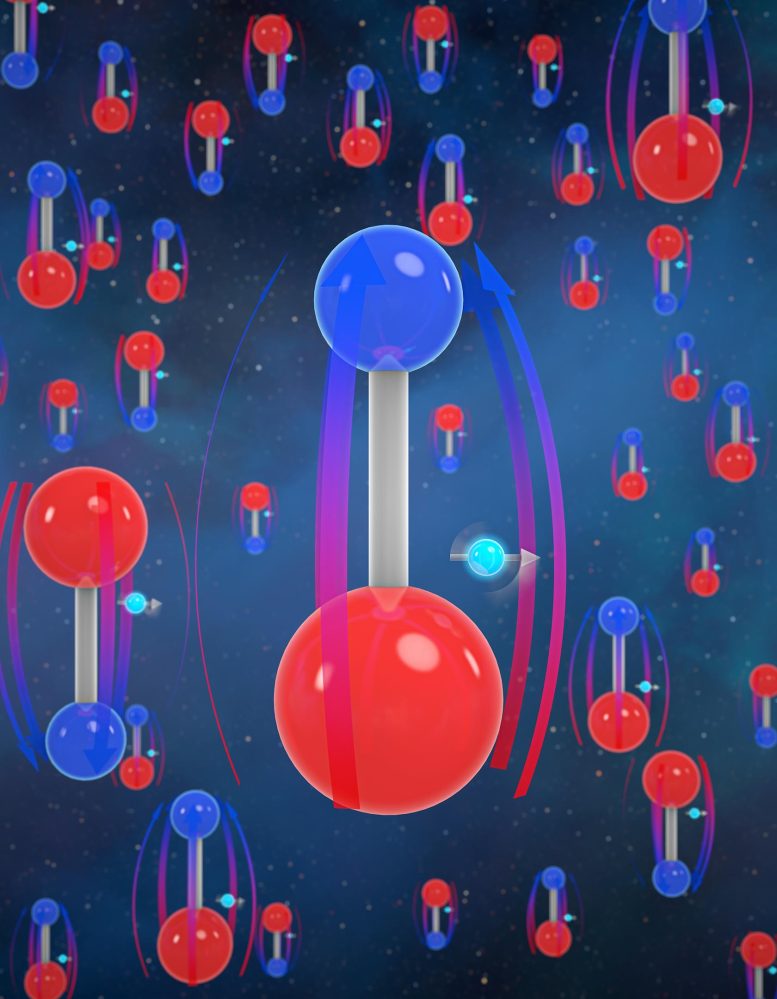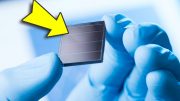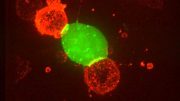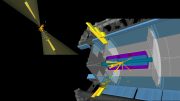
Researchers conducted a record-breaking precision measurement of the electron’s electric dipole moment (eEDM) in search of asymmetry that could explain the existence of matter. Despite their improved precision, their results showed the electron to be symmetric, with no discernible asymmetry. Their study, though not providing a definitive answer, advances the understanding of the universe’s fundamental nature and points to alternatives beyond expensive particle accelerators for such investigations.
JILA physicists make record-breaking measurement of a key electron property.
In the first moments of our universe, countless numbers of protons, neutrons, and electrons formed alongside their antimatter counterparts. As the universe expanded and cooled, almost all these matter and antimatter particles met and annihilated each other, leaving only photons, or flashes of light, in their wake.
And if the universe were perfectly symmetrical, with equal amounts of matter and antimatter, that would be the end of the story — and we would never have existed. But there must have been an imbalance — some leftover protons, neutrons, and electrons — that formed atoms, molecules, stars, planets, galaxies, and eventually, people.

Electrons are made up of a negative electrical charge, and scientists at JILA have been trying to measure how evenly that charge is spread between the north and south pole of the electron. Any unevenness would indicate that the electron is not perfectly round, and that would be evidence of an asymmetry in the early universe that led to the existence of matter. The Cornell Group at JILA studied how the electrons in molecules behaved as they adjusted the magnetic field around them to look for any shift in the electrons. Credit: JILA/Steven Burrows
“If the universe had been perfectly symmetrical, then there would be nothing left but light. This is a hugely important moment in history. Suddenly there is stuff in the universe, and the question is, why?” said NIST/JILA Fellow Eric Cornell. “Why do we have this asymmetry?”
The mathematical theories and equations that explain our universe call for symmetry. Particle theorists have refined these theories to tackle the presence of asymmetry. But without evidence, those theories are just math, Cornell explains, so experimental physicists including his group at JILA have been looking at fundamental particles such as electrons for signs of asymmetry.
Now, the JILA group has made a record-breaking measurement of electrons, narrowing down the search for where this asymmetry came from. Its findings have been published in Science. JILA is jointly operated by the National Institute of Standards and Technology (NIST) and the University of Colorado Boulder.
“This is a hugely important moment in history. Suddenly there is stuff in the universe, and the question is, why?”
— NIST/JILA Fellow Eric Cornell
One place to look for evidence of asymmetry is in the electron’s electric dipole moment (eEDM). Electrons are made up of negative electric charge, and the eEDM indicates how evenly that charge is spread between the electron’s north and south pole. Any measurement of eEDM above zero would confirm an asymmetry; the electron would be more egg-shaped than circular. But no one knows just how small that deviation may be.
“We need to fix our math to be closer to reality,” said Tanya Roussy, a graduate student in Cornell’s research group at JILA. “We’re looking for places where that asymmetry might be, so we can understand where it came from. Electrons are fundamental particles, and their symmetry tells us about the symmetry of the universe.”
Cornell, Roussy and their team at NIST and JILA recently set a record for precision measurement of eEDM, improving on previous measurements by a factor of 2.4.
How precise is that? If an electron were the size of the Earth, their study found that any asymmetry that exists would be smaller than the radius of an atom, Roussy explained.
Making a measurement that precise is incredibly difficult, she adds, so the group needed to be clever. The researchers looked at molecules of hafnium fluoride. If they applied a strong electric field to the molecules, non-round electrons would want to align with the field, shifting around inside the molecule. If they were round, then the electrons wouldn’t budge.
Using an ultraviolet laser, they stripped electrons off molecules, making a set of positively charged ions, and trapped them. Alternating the electromagnetic field around the trap, the molecules were forced to either align or not align with the field. Then the researchers used lasers to measure the energy levels of the two groups. If the levels were different between them, that would indicate that the electrons were asymmetrical.
Their experiment allowed them to have longer measurement times than past attempts, which gave them greater sensitivity. However, the group’s measurements showed that the electrons didn’t move energy levels, indicating that as best as we can presently measure, electrons are round.
There’s no guarantee that anyone will find a nonzero measurement of eEDM, Cornell points out, but this level of precision from a tabletop experiment is an achievement. It shows that expensive particle accelerators are not the only means of exploring these fundamental questions about the Universe and that there are a lot of avenues to try. And while the group didn’t find asymmetry, its result will help the field keep looking for answers to the asymmetry of the early universe.
“We found up to our measurement the electron is symmetric. If we would have found nonzero, it would be a big deal,” Roussy added. “The best bet is to have teams of scientists around the world looking at different options. As long as we all keep measuring the truth, eventually, someone will find it.”
Reference: “An improved bound on the electron’s electric dipole moment” by Tanya S. Roussy, Luke Caldwell, Trevor Wright, William B. Cairncross, Yuval Shagam, Kia Boon Ng, Noah Schlossberger, Sun Yool Park, Anzhou Wang, Jun Ye and Eric A. Cornell, 6 July 2023, Science.
DOI: 10.1126/science.adg4084









JILA is mentioned many times in the article. What is JILA?
Good question! JILA is “a joint institute of University of Colorado Boulder and NIST”.
“In the first moments of our universe, countless numbers of protons, neutrons, and electrons formed alongside their antimatter counterparts”
—-
How did this happen? What created them? Did these particles magically appear from nothing?
Good question!
Modern cosmology is constituted of two different theories. One theory is describing a preceding cold inflation era, inflation was discovered in the 1970s-1980s. And another theory is more famously describing a subsequent dark energy/dark matter era starting with a hot big bang.
[You can hear different descriptions of “Big Bang” or LCDM – properly the dark energy (a vacuum energy Lambda factor in general relativity) and dark matter (Cold Dark Matter) theory – incorporating both theories. It can be very confusing.]
The cold inflation era looks in observatories, studying the properties we can still see effects of, like a high potential energy process. A cold vacuum at high potential energies, most likely consisting of a single quantum field that eventually ended. It looks like, as its era ended, as its potential energy was transformed into kinetic energy of radiation and matter of the hot big bang. [See for example “Squeezing down the Theory Space for Cosmic Inflation”,] Daniel Meerburg, APS Physics. “Inflation was introduced in the early 1980s to solve some of cosmology’s biggest conundrums, and to this day, it is the most widely accepted and plausible theory of the early Universe.”]
An even better, but longer description, is given in the Planck Legacy Archives in their 2018 final cosmology papers. There they go through some of the evidences for inflation since the cosmic background radiation they studied bear the imprints of it (because it was the initial responsible process – long story, but the paper tells it). Turns out that LCDM is basically tested on 5 parameters, while inflation can be tested on 6 [!] and enough has been tested to make it accepted by cosmologists.
According to the topological vortex gravitational field theory, no particle can be independent from the world. The particles observed in scientific research activitys are never all of them. Asymmetry is a local manifestation of symmetric and its interaction. Symmetry is a fundamental part of geometry, nature, and shapes. It creates patterns that help us organize our world conceptually. If there is God’s creation of the world, then symmetry is God.
Pseudoscience is very popular in academic circles. There are not many experimental results that can get analyzed scientifically.
imagine electron expands then contracts .iaw gen relativity
each shift in acceleration changes direction and magnetic field .so from outside it always shows negative
The continuing failure of baryons to generate the required CP asymmetry for getting a matter/antimatter asymmetry strengthens the more obvious option of neutrinos having the requisite properties.
“The mixing angles have been measured by a variety of experiments (see neutrino mixing for a description). The CP-violating phase delta_CP
has not been measured directly, but estimates can be obtained by fits using the other measurements. … The value of delta_CP = 197∘ (-25∘ +42∘ is very difficult to measure, and is the object of ongoing research; however the current constraint 169∘ ≤ delat_CP ≤ 246∘, in the vicinity of 180° shows a clear bias in favor of charge-parity violation.”
[“Pontecorvo–Maki–Nakagawa–Sakata matrix”, Wikipedia]